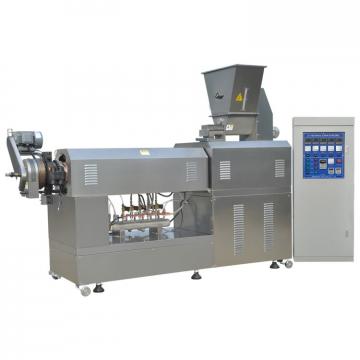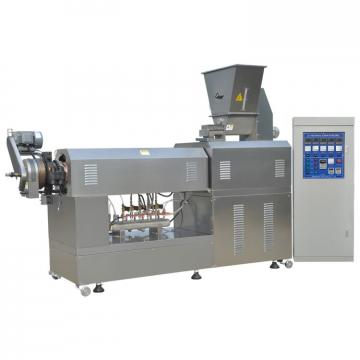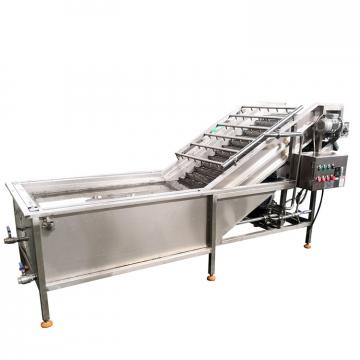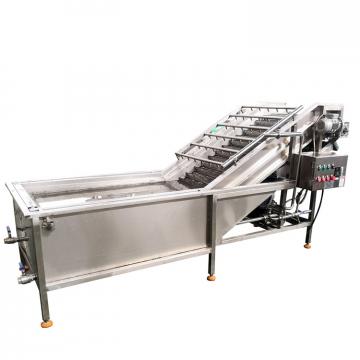Home> Company News> Microwave drying process of peanut based on temperature control
- AddressNo.4087 SHAHEXI ROAD, TIAOQIAO DISTRICT,JINAN,CHINA
- Factory AddressNo.4087 SHAHEXI ROAD, TIAOQIAO DISTRICT,JINAN,CHINA
- Worktime9:00-18:00
- Phone(Working Time)0531-85064681
- Phone(Nonworking Time)86-18660125156
- Fax0531-85064682
Microwave drying process of peanut based on temperature control
2018-10-17 11:52:12ABSTRACT: This paper mainly studies the effect of temperature-controlled Microwave drying equipment on peanuts, using self-made temperature-controlled microwave drying equipment to study the quality difference between conventional microwave drying and temperature-controlled microwave drying, in order to verify the superiority and usability of temperature-controlled microwave drying. The results showed that peanuts were scorched after microwave drying, and the drying effect was very poor. Peanut drying equipmenthad no scorching, smooth skin, smooth and fresh cotyledons, and the drying effect was ideal. The results showed that the quality of peanut dried by temperature-controlled microwave drying could be guaranteed at 1.2 W/g power and 45-50 ~C temperature range.
Microwave drying equipment is usually electromagnetic wave with penetration characteristics of 300 MHz to 300 GHz. Microwave heating is based on the principle of dielectric loss. The water molecule in the material is polar molecule. Under the action of microwave, its polar orientation changes with the change of external electromagnetic field. Microwave drying is the principle of evaporating polar molecule by using the action of microwave on polar molecule. The drying speed can be adjusted by adjusting the power of microwave drying. Microwave drying technology has been applied in light industry, food industry, chemical industry, agriculture and agricultural products processing in developed countries; microwave drying technology in China began in the 1970s, and now many agricultural products have been successfully used in microwave drying. However, the measurement and control of temperature during microwave drying is still not mature enough. In conventional microwave drying, the temperature of crops rises rapidly, and the quality of crops fluctuates greatly after drying, even the internal scorching of crops occurs. Temperature-controlled microwave drying can make the drying temperature of crops in a set range to ensure the quality of crops after drying, but at present, temperature-controlled microwave drying technology is still less in research and application. In this paper, through the conventional microwave drying and temperature-controlled microwave drying experiments, the moisture content and sensory of peanuts were compared to verify the advantages of temperature-controlled microwave drying, which provides a theoretical basis for the popularization of crop drying technology and the design of equipment, and provides technical support for industrial management.
1.
(1) material selection: fresh red skin peanuts are produced in Yucheng District, Ya'an City, Sichuan province. Material handling: using screening machine for initial screening, the size of the material is basically the same and the grain is full. The screened peanuts were sealed in 100 g each and placed in the fridge at 4~8 C for storage.
(2) Equipment and instrument drying equipment: self-made microwave temperature control drying equipment, based on the Granz WBBH0809 microwave oven as a platform, added AT89S52 microcontroller, AD590 temperature sensor, ADC0804, A/D conversion chip, 74HC573N latch, relay and digital display block hardware, hardware structure diagram. According to the test requirements, the temperature measurement and control system is designed. According to the characteristics of peanut, the corresponding temperature range is set in the program of single chip microcomputer. The temperature sensor is used to measure the real-time temperature in the drying process. When the upper temperature limit is reached, the working power supply of the microwave oven is automatically cut off, so that the temperature of the crops is reduced, and the working power supply of the microwave oven is automatically closed until the lower temperature limit is reached, and the heating is continued. In this way, the test has been in a continuous working state, through the intermittent work of the microwave oven, and then realize the temperature control drying process.
Conventional microwave drying uses self-made microwave temperature control drying equipment, retains the temperature measurement system and quality measurement system, closes the relay control system. The treated peanuts were put into it and dried under different power. The moisture content of peanuts was calculated by real-time peanut quality change. When the moisture content was less than 10%, the drying was stopped. Each group was tested three times, and the average value was calculated. The quality of peanut dried by conventional microwave was checked by sensory standards. The dried peanuts were put into the oven by microwave drying. According to different power and temperature ranges, the peanut moisture content was calculated by real-time peanut quality change. When the moisture content was less than 10%, the drying was stopped. The average value of each group was calculated three times, and the quality of Peanut after microwave drying was checked by sensory standards. Drying rate Drying rate refers to the unit time, unit drying area on the vaporization of water quality, that is, Gdx
U=
Sds
In the formula, G is the mass of dry material in a batch of operations, kg, S is dry area, M2. In this experiment, the self-made microwave temperature-controlled drying equipment was used to dry the treated peanuts with the lowest power (120 W) until no loss of water.
(3) the sensory evaluation method mainly evaluates the drying quality from the color of peanut kernels. The drying curves and drying rate curves of peanut under different microwave power were analyzed by conventional microwave test. The higher the microwave power, the steeper the drying curve, the shorter the drying time, the higher the microwave power and the higher the temperature. At the beginning of drying, the temperature rises rapidly, and when the temperature reaches the highest point, the moisture content has not reached the requirement. The microwave oven continues to work. After the temperature rises inertia, it returns to a relatively stable range. A. The relationship between moisture content and drying time of peanut B. Peanut surface temperature and drying time. When the drying power is 3.52 W/g, the drying rate is the highest, reaching 24 kg/(m2.h), only drying for about 15 minutes.
 Factory Fruit and Vegetable Processing Machines/Quick Frozen Line/Food Processing Production Line for Daylily Production Line with High Output
Factory Fruit and Vegetable Processing Machines/Quick Frozen Line/Food Processing Production Line for Daylily Production Line with High Output Factory Direct Sales PS Styrofoam Food Container Production Line
Factory Direct Sales PS Styrofoam Food Container Production Line Complete Pure / Mineral Drinking Bottled Water Production Line Factory in Beverage / Food Area
Complete Pure / Mineral Drinking Bottled Water Production Line Factory in Beverage / Food Area Cheetos Fried Food Production Factory Extruder Processing Line
Cheetos Fried Food Production Factory Extruder Processing Line Automatic Mini Food Factory Macaroni Processing Line Pasta Production Line
Automatic Mini Food Factory Macaroni Processing Line Pasta Production Line
